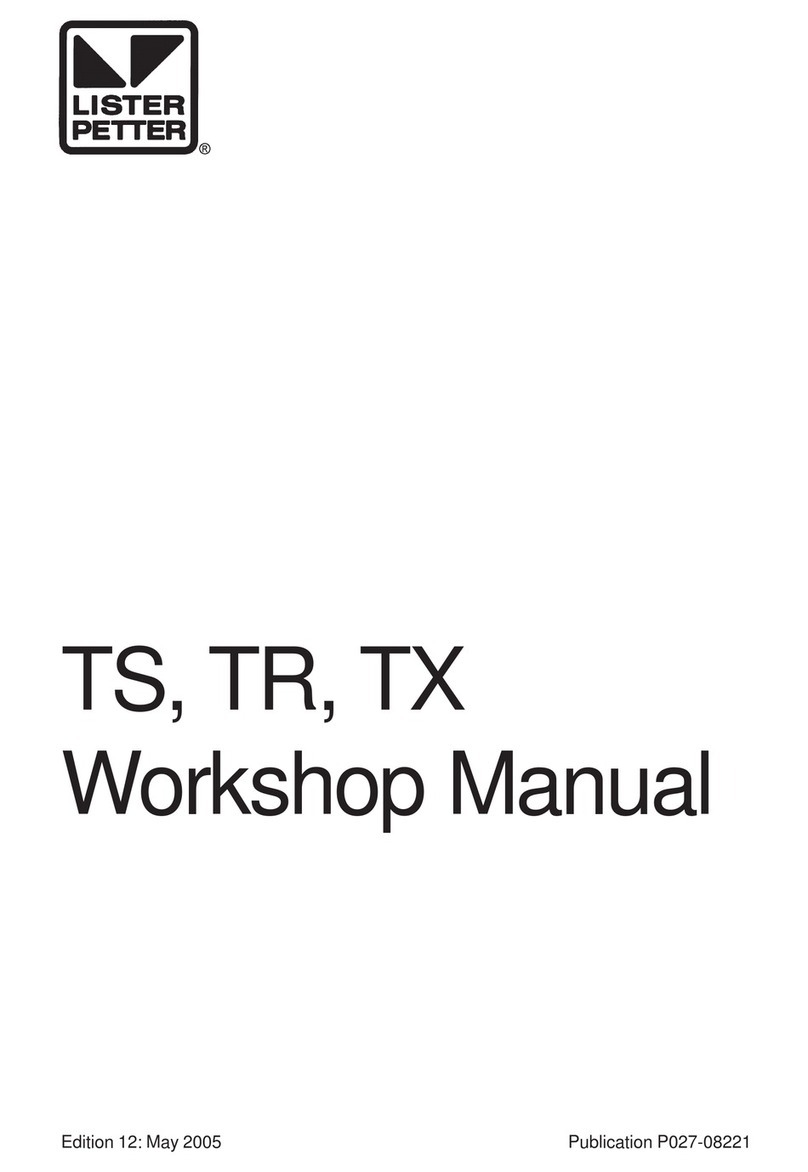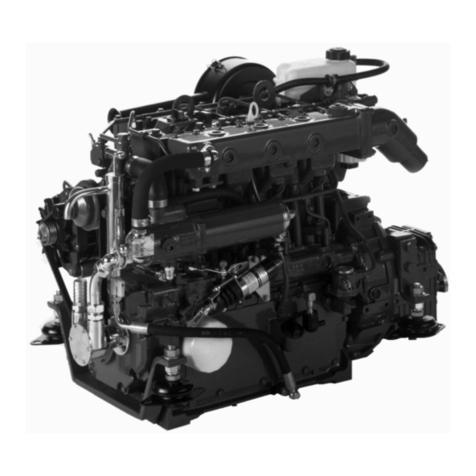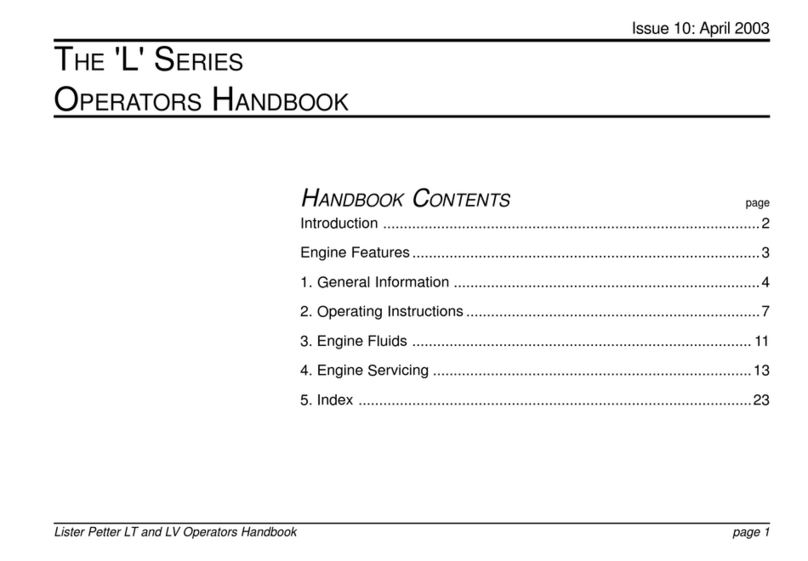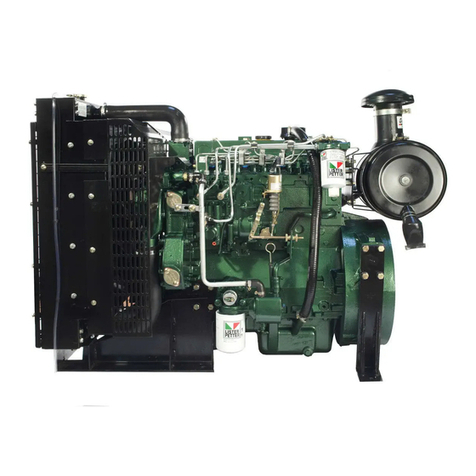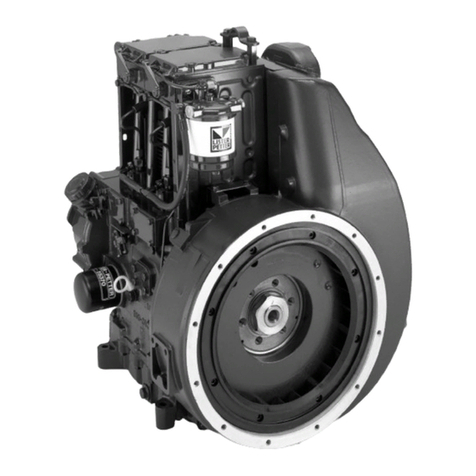
ALPHA SERIES ENGINES WORKSHOP MANUAL
6
b. Wear suitable ear protection to protect against
objectionable or uncomfortable loud noise.
Prolonged exposure to loud noise can cause
impairment, or loss of hearing.
c. The use of music or radio headphones could
cause a loss of concentration.
Handling Chemical Products Safely
a. Direct exposure to hazardous chemicals can
cause serious injury.
b. Potentially hazardous chemicals include such
items as lubricants, fuel, coolant concentrate,
battery acid, paint and adhesives.
c. Manufacturers Safety Data Sheets will provide
specic details of the physical and health
hazards, safety and emergency procedures and
any necessary personal protection equipment
required while working with hazardous
materials.
Safe Maintenance Considerations
a. Understand the service procedures before
commencing any work.
b. Ensure the work area is clean, dry, well ventilated
and has adequate lighting.
c. Isolate the engine starting system before
commencing any work on the plant.
d. All persons using equipment or processes in
connection with the maintenance of plant and
machinery must have received adequate and
suitable training.
High Pressure Fluids
a. Never allow any part of the body to come
into contact with high pressure hydraulic oil,
compressed air or fuel oil, for example when
testing fuel injection equipment.
b. Both digested and injested uids can lead to
serious injury, possibly with fatal results in a very
short period of time.
Electrical System Considerations
a. Ensure that the battery is of sufcient capacity to
start the engine down to its minimum operating
temperature taking into account any drag that
may be imposed on the engine by the type of
transmission that is attached to it.
b. Ensure the battery and all engine wiring cables
are of sufcient size to carry the currents
required.
c. Check that the engine mounted alternator is of
sufcient output to cope with the total electrical
load required by the machine to which it is tted.
d. Ensure engine wiring cables are:-
Bound together in a loom and adequately
supported.
Routed to avoid any hot surfaces, particularly the
exhaust system.
Not in contact with any sharp corners or rough
surfaces so as to avoid any possibility of chafng
taking place.
Alternator Precautions
a. Never remove any electrical cable without rst
disconnecting the battery.
b. Only disconnect the battery with the engine
stopped and all switches in the OFF position.
c. Ensure cables are tted to their correct terminals.
A short circuit or reversal of polarity will ruin
diodes and transistors. Never connect a battery
into the system without checking that the voltage
and polarity are correct.
d. Never ash any connection to check the current
ow or experiment with any adjustments or
repairs to the system.
e. The battery and alternator must be disconnected
before commencing any electric welding when a
pole strap is directly or indirectly connected to the
engine.
Starter Battery Precautions
WARNING
Sulphuric acid in battery electrolyte is poisonous,
is strong enough to burn skin, eat holes in
clothing and cause blindness if splashed into
the eyes.
a. Do not smoke near the batteries and keep sparks
and ames away from them.
b. Batteries contain sulphuric acid - if the acid has
been splashed on the skin, eyes or clothes ush
it away with copious amounts of fresh water and
seek immediate medical aid.
c. Keep the top of the battery well ventilated during
charging. Switch off the battery charger before
connecting or disconnecting the charger leads.
d. Disconnect the battery negative (earth) lead rst
and reconnect last.
e. Never 'ash' connections to check current ow.
f. A damaged or unserviceable battery must never
be used.
g. Do not attempt to charge a frozen battery; it may
explode; warm the battery to 16°C (60°F).
Waste Contamination
a. Extreme care must be taken to ensure that waste
oil, fuel, lter elements, coolant concentrate,
battery electrolyte, solvents or other toxic
